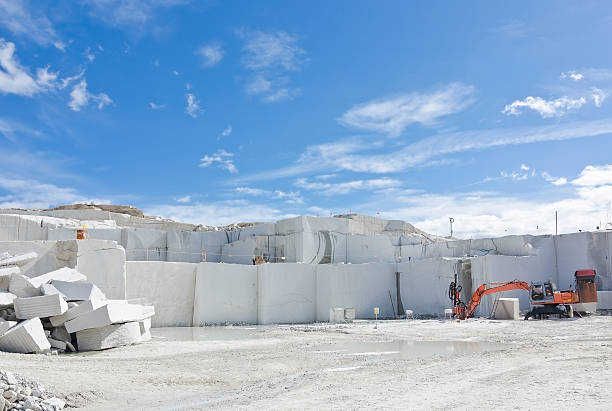The Covert Gems: Exploring Granite Quarries in South Africa
The Covert Gems: Exploring Granite Quarries in South Africa
Blog Article
Unearthing the Rich History and Sustainable Practices of Granite Quarrying
As we depend on the precipice of uncovering the detailed tapestry of granite quarrying, a journey via time reveals not simply the physical act of removing stone yet also the cultural and historic importance woven right into the extremely fabric of this practice. From the old origins that laid the foundation for contemporary quarrying methods to the lasting techniques that are shaping the future of this sector, each chisel mark on granite surfaces narrates waiting to be uncovered (granite quarries in south africa). The tradition of granite quarrying extends far past mere removal; it is a testament to human ingenuity, resilience, and the enduring appeal of this marvelous rock
Ancient Origins of Granite Quarrying
Dating back to ancient human beings, the practice of quarrying granite has actually been an essential component of human background and architectural advancement. The earliest proof of granite quarrying go back to old Egypt, where substantial pyramids and complex sculptures were crafted from this durable rock. The Egyptians used primitive devices to remove granite blocks from quarries, showcasing the relevance of this product in their significant constructions.
Progressing in history, the Greeks also made considerable payments to the quarrying of granite. The Greeks used granite in different building wonders, such as holy places and statues, showing their ability in shaping and carving this sturdy rock. The Romans further refined the techniques of quarrying granite, employing sophisticated tools like chisels and hammers to extract and shape granite for their iconic structures.
Through the centuries, the practice of quarrying granite has advanced, with modern-day technologies improving effectiveness while maintaining the ageless allure of this natural stone - granite quarries in south africa. From ancient civilizations to contemporary contractors, the heritage of granite quarrying remains to form our globe
Evolution of Quarrying Strategies
The evolution of quarrying techniques has actually been noted by a continuous progression towards better efficiency and precision in removing granite. From the simple approaches employed by our forefathers to the advanced modern technologies made use of in modern quarrying procedures, the market has undertaken substantial innovations. Early quarrying methods involved hand-operated labor with standard tools such as chisels, hammers, and wedges to remove granite blocks from the planet. As worlds progressed, strategies like fire-setting and primitive dynamites were introduced to promote the extraction procedure.
Developments in computer-controlled tools and 3D modeling have actually optimized quarrying procedures, leading to marginal ecological impact and boosted sustainability practices. As the need for granite continues to climb, the advancement of quarrying strategies continues to be indispensable to conference sector requires successfully and sustainably.
Social Value of Granite
Granite holds an extensive social importance throughout numerous civilizations because of its long-lasting visibility in building work of arts and prized monuments. From the marvelous pyramids of Egypt to the elaborate makings of the Angkor Wat temple in Cambodia, granite has actually been a material of choice for revealing splendour and longevity in cultural heritage. In ancient Rome, granite columns embellished temples and public structures, signifying toughness and durability. The cultural Resources importance of granite extends past its physical features; it symbolizes resilience, stability, and eternity, making it a sign of withstanding legacies and practices.

Sustainable Practices in Quarrying
Amidst the abundant background of granite quarrying and its cultural significance lies an expanding focus on sustainable practices within the industry. As environmental understanding and worries concerning source deficiency have increased internationally, the quarrying field has actually increasingly welcomed lasting techniques to decrease its impact on the atmosphere and surrounding neighborhoods.

Additionally, recovery and rehabilitation of quarry sites post-extraction are important to sustainable techniques. By recovering quarried locations to an all-natural or valuable state, such as developing wild animals environments or leisure areas, quarriers can click here for more info balance out the environmental footprint of their procedures and add favorably to the regional community.
Tradition of Granite Quarrying
With a historic background steeped in workmanship and industrial progression, what sustaining influence has granite quarrying left on the landscape of modern-day culture? The legacy of granite quarrying transcends mere removal techniques; it has actually shaped building wonders, metropolitan landscapes, and cultural heritage worldwide. The resilient nature of granite has made it a preferred choice for monuments, structures, and infrastructure, standing as a testimony to the skill and artistry of quarry workers across generations.
Moreover, the financial impact of granite quarrying can not be forgotten. The sector remains to provide work chances and drive local economies in areas where granite extraction is widespread. It has actually also stimulated technical developments in quarrying techniques and equipment, leading to extra effective and sustainable practices.
In regards to sustainability, the tradition of granite quarrying includes initiatives to mitigate ecological impacts via improvement projects and accountable resource management. By stabilizing economic interests with ecological stewardship, the market strives to ensure that future generations can remain to gain from this long-lasting natural deposit.
Verdict

Report this page